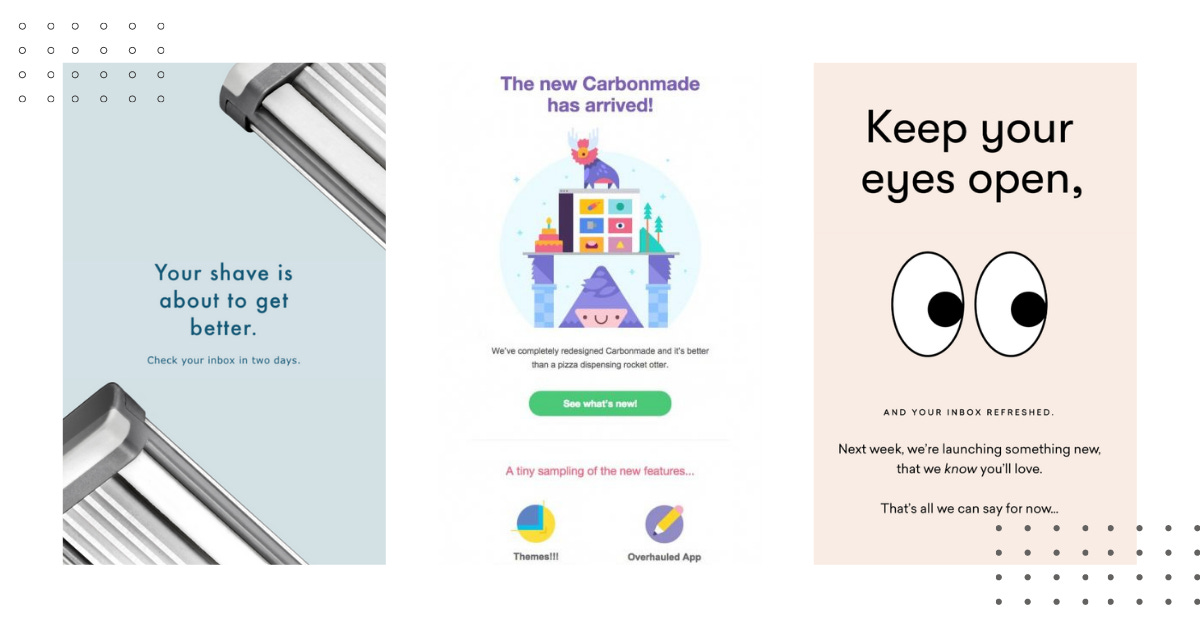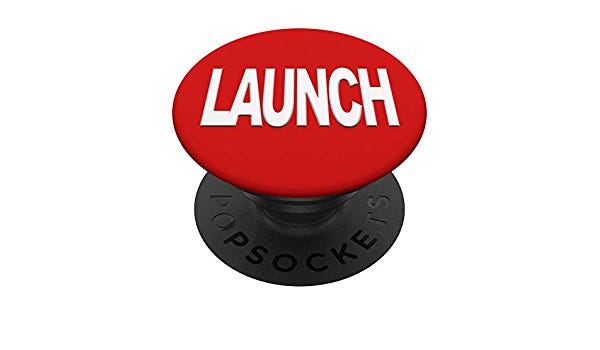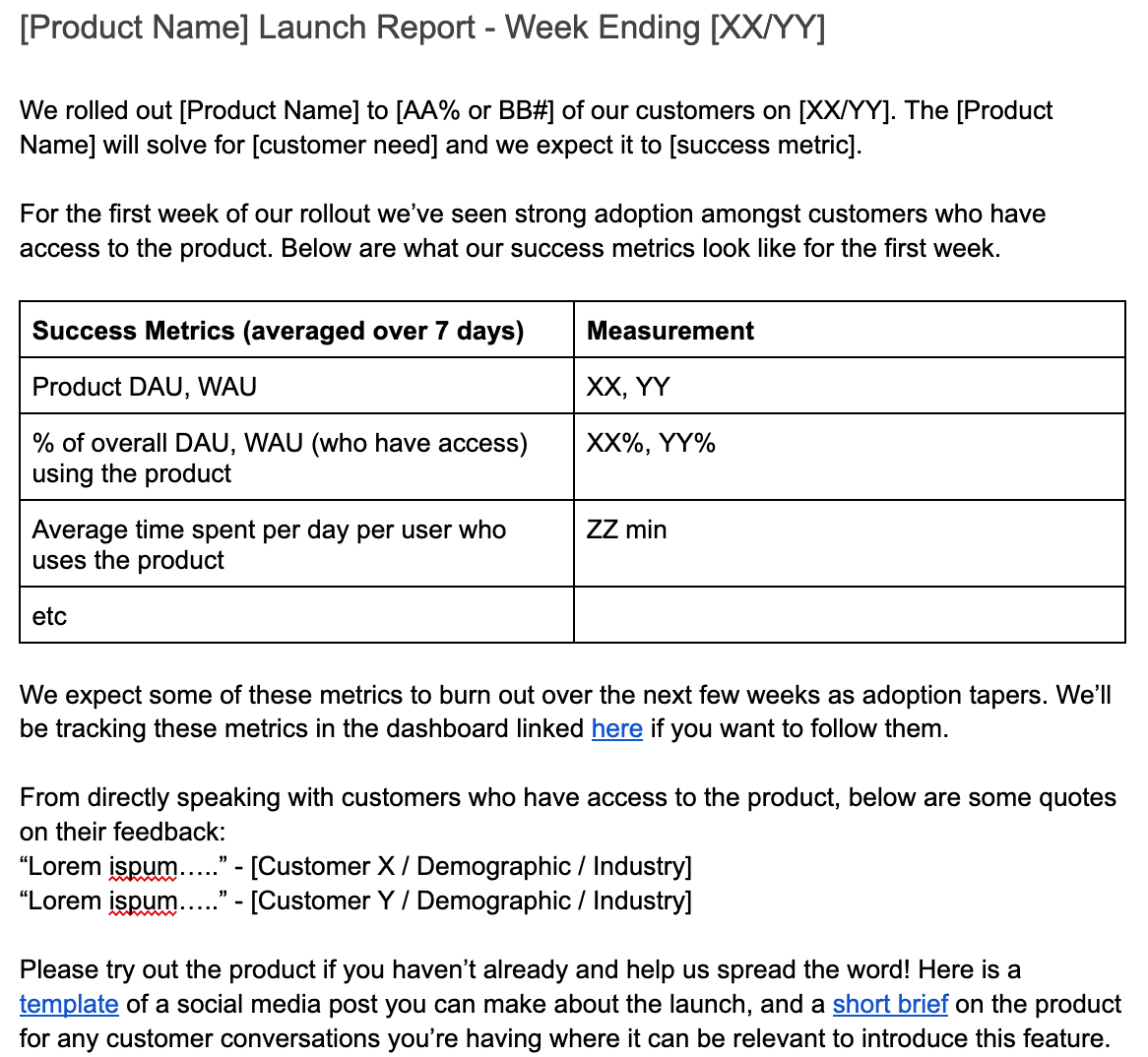Closing the post-launch feedback loop
Making the most of each product launch involves measurement, communication, celebration and retrospectives
There’s nothing like the thrill of launching a new product at work- you and your team have labored over this launch for weeks or months, lining everything up to make it a reality. And finally the big day has arrived!
But as you launch new products or features, there are a few things to keep in mind to make the most out of each launch.
#1 Measure success metrics and collect direct customer feedback
For software product updates that rollout to customers without them needing to upgrade, you should closely measure success metrics for at least 4 weeks after a launch, sending a metric summary email to key stakeholders each week.
Week 1 is about early traction and adoption
Week 2 and 3 start to bring deeper customer feedback and usage metrics start to stabilize
By Week 4 you should have a prediction on whether you’ll hit your target goal and can measure stickiness metrics like DAU/MAU
For product updates which require customers to upgrade their software version of your product, this rollout cycle can be a few months long, so you’ll need to track and report over a longer timeframe after your initial launch.
As part of this post-launch analysis, in addition to numerical KPIs on feature usage, it helps to directly interview customers to hear their live feedback on the product.
Below is a template for communicating launch metrics that could help you get started (note: the success metrics are placeholders you should replace with what makes sense for your product).
#2 Tell people about your launch (both internal and external)
When product managers think about communications for a launch, they often think about external marketing and PR, which are important for getting the word out about your launch. Large tech companies have PR departments with close contacts to major publications, which helps with getting press coverage. Smaller companies try and get on the radar of publications by sending “tips” or leveraging advertising channels.
But sometimes the highest leverage thing you can do is to have a process around notifying current customers and prospects about your launches, and communicating internally within your company about your launch.
The former can take the form of launch emails or monthly newsletters that you send to customers, or in-app messages and notifications which can build customer awareness. The latter is great for building internal buzz around your product, and enlisting cross-functional stakeholders to help get the word out about your launch (e.g. sales has a conversation scheduled with a prospect where they share your recent launch).
Many mid/large companies have an internal “product launches” email listserv that people across the company subscribe to, where product managers send product launch announcements, building visibility across the company. It takes a village to effectively communicate a product launch.

#3 Celebrate your team’s hard work
As a past manager of mine used to say: “never miss an opportunity to celebrate with your team”. Time and again, research has shown that celebrations are key to happiness and productivity. Releasing any new software takes effort, creativity, and time, and despite what the success metrics say, the act of releasing itself is worth celebrating. At minimum, it represents an opportunity to learn more about how to satisfy your customers. And with positive outcomes, it can change the trajectory of your business.
Celebrations help people feel recognized, digest all the progress they have made towards milestones, and give people courage to take risks by creating the feeling of having a support system at work. Whether it’s a celebratory team lunch or cracking open a bottle of wine or an appreciation meeting, make celebration a part of your launch process.

#4 Run a project retrospective
Each launch represents an opportunity to reflect on your internal team process- what worked well, what could have gone better. Product Managers and Engineering Leads often co-lead launch retrospectives with the broader dev team.
Some questions you’ll want team members to weigh in on during a retrospective:
What went well?
Were the requirements and expectations clear?
Was the schedule reasonable? Were deadlines hit?
Did supporting teams know what they needed to know (with enough time to properly execute their tasks)?
Were there any surprises?
Where and what were the bottlenecks?
Was the launch successful?
There are several other approaches to running retrospectives, including the 4Ls method (Liked, Learned, Lacked, Longed For) and Start, Stop, Continue framework that you learn more about here and here. As with all retrospectives, it is important to apply these takeaways to your next project, for it to be a good use of everyone’s time.
#5 Schedule a brown bag for lessons learned
Finally, it can be helpful for you to share lessons learned from your product launch to others in your company. This can help inform future products and improve internal product development processes. Usually the audience for these is other product managers, but it could span a wider audience especially at smaller companies.
Examples of learnings could include: customer feedback (hits and misses), mistakes to avoid when scoping project timelines, internal cross-functional bottlenecks that could be eased or should be planned for in advance, etc.

